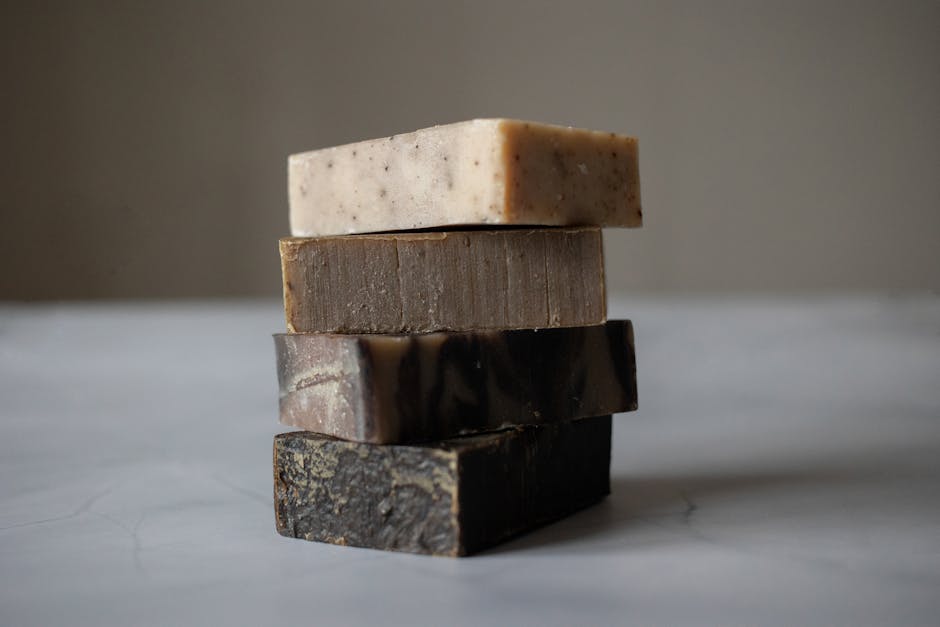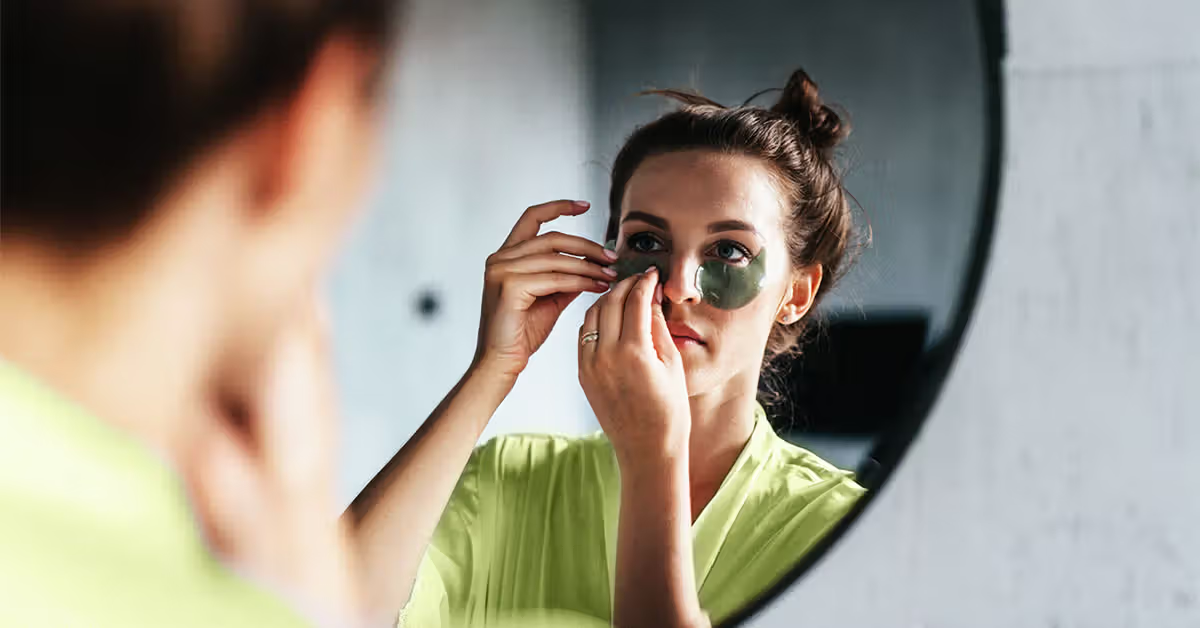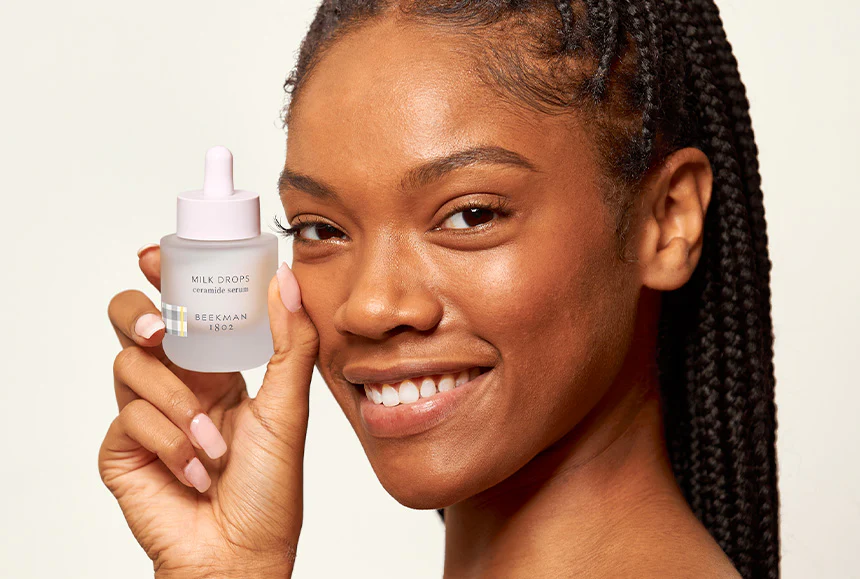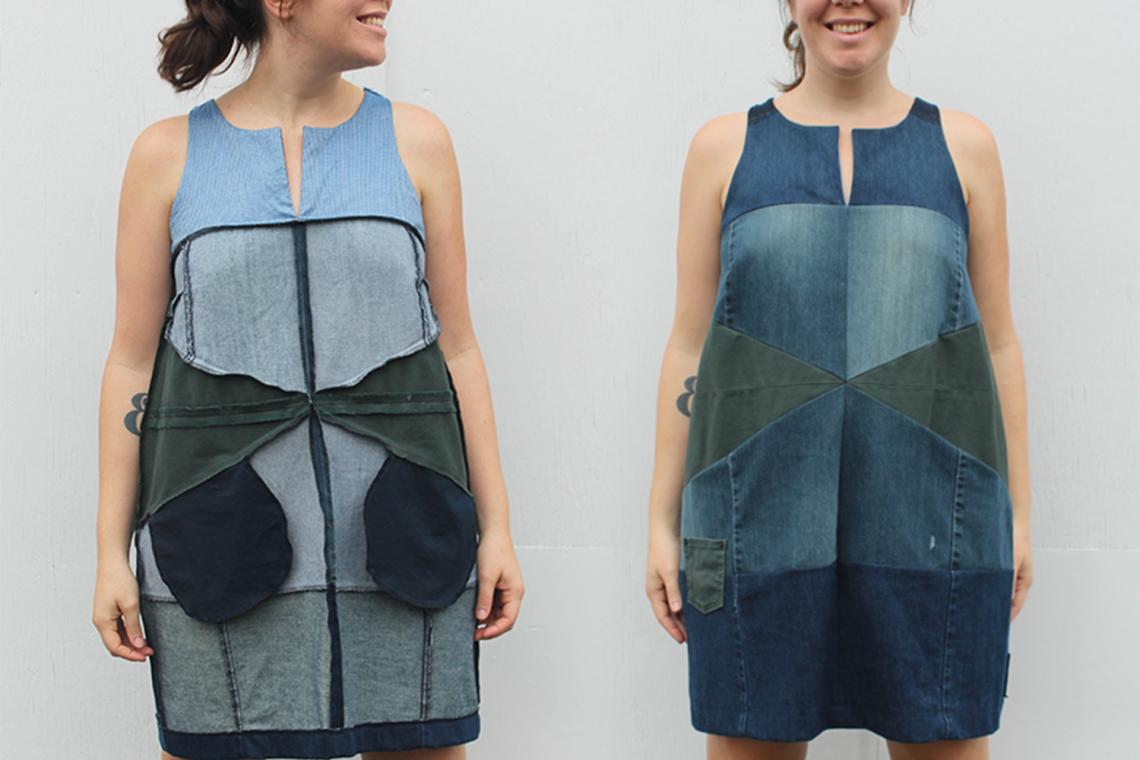The Essentials of Eco-Friendly Wellness
Eco-friendly wellness is a holistic approach to personal care that benefits both your health and the planet. If you’re looking to accept sustainable wellness practices, here are the key elements:
- Use products with biodegradable ingredients that don’t harm waterways
- Choose plastic-free or recyclable packaging to reduce waste
- Support brands with ethical sourcing and fair trade practices
- Incorporate mindfulness practices that connect you with nature
- Adopt a more plant-based diet to reduce your carbon footprint
The beauty industry produces a staggering 120 billion units of packaging every year, with 79% of plastic ending up in landfills or as pollution. This environmental crisis has sparked a revolution in how we approach self-care and wellness.
Eco-friendly wellness isn’t just a trend—it’s a necessary evolution in how we care for ourselves while preserving the world around us. By making mindful choices about the products we use and the practices we adopt, we can create meaningful change.
“When environmental consciousness is becoming more integrated into daily decisions, even self-care routines are changing,” notes the Green Beauty Community, a nonprofit dedicated to making sustainable beauty the new standard.
The shift toward sustainable wellness practices represents a growing understanding that personal health and environmental health are deeply interconnected. When you choose products with natural ingredients, minimal packaging, and ethical sourcing, you’re not only reducing your exposure to potentially harmful chemicals but also supporting healthier ecosystems.
Whether you’re just beginning your eco-friendly wellness journey or looking to deepen your existing practices, this guide will provide you with practical steps to make your self-care routine more sustainable without sacrificing effectiveness or enjoyment.

Eco-Friendly Wellness: What It Means & Why It Matters
What if I told you that taking care of yourself could also mean taking care of our planet? That’s exactly what eco-friendly wellness is all about – finding that sweet spot where your health and Earth’s health meet in perfect harmony.
When we talk about sustainable wellness, we’re talking about a beautiful relationship between you and the environment. It’s like a friendship where both parties benefit: you feel better, and the planet breathes easier. This connection isn’t just nice to have – it’s essential for our collective future.
The numbers tell a story we can’t ignore: with 8 million tons of plastic swimming into our oceans annually and 79% of landfill plastics coming from personal care products, our self-care choices leave footprints bigger than we might realize. Eco-friendly wellness offers a different path – one that protects biodiversity, shrinks carbon emissions, and supports a circular economy where waste becomes a resource.
As the folks at Body+Mind wellness community put it, “Sustainability is an essential practice in society, as it focuses on following practices and ways of living to reduce and limit the environmental impact.” This perspective transforms wellness from something we do just for ourselves into something we do as responsible citizens of Earth.
When you accept eco-friendly wellness, your impact ripples outward. The organic farming behind sustainable beauty products nurtures rich, healthy soil. The clean ingredients wash down your drain without poisoning waterways. Your choices matter – not just for you, but for everyone and everything downstream.
Want to learn more about how sustainable practices affect our well-being? Check out this fascinating scientific research on sustainable well-being.
Eco-Friendly Wellness and Mental Well-Being
The connection between eco-friendly wellness and your mental health runs surprisingly deep. It turns out that what’s good for the earth is genuinely good for your mind too.
Have you ever noticed how a walk in the park can clear your head better than scrolling social media? That’s no accident. Nature connection is a powerful mental health tool, and practices like forest bathing (shinrin-yoku) from Japan prove it. By fully immersing yourself among trees and using all five senses, you can actually lower your blood pressure and reduce stress hormones.
Mindfulness takes on new meaning when paired with environmental awareness. Whether you’re meditating beside a stream or simply paying attention to the birds outside your window, these moments of presence strengthen your bond with the natural world while calming your nervous system.
Digital detoxes offer a double benefit – giving your brain a much-needed rest while reducing energy consumption. Even a screen-free evening once a week can make a noticeable difference in your sleep quality and mental clarity.
As one wellness coach I spoke with recently noted, “Daily mindfulness and gratitude are essential for sustaining eco-friendly wellness goals.” By cultivating thankfulness for clean air, fresh water, and natural beauty, we naturally become more committed to protecting these precious resources.
Sustainable Development Benefits for You & Earth
The perks of eco-friendly wellness extend far beyond feeling good about your shopping choices. Let’s talk about the real, tangible benefits for both you and our planet.
Reduced exposure to potentially harmful chemicals might be the most immediate benefit. Many conventional beauty products contain ingredients linked to skin irritation, hormone disruption, and other health concerns. By choosing cleaner formulations, you’re being kinder to your body.
Your eco-friendly wellness choices support ethical labor practices too. When you purchase fair trade certified products, you’re ensuring that farmers and workers throughout the supply chain receive fair wages and work in safe conditions. Good for them, good for your conscience.
The soil and water health improvements from sustainable farming practices create a healthier ecosystem for everyone. When farmers grow ingredients for clean beauty products without synthetic pesticides, they’re protecting watershed health and soil fertility for future generations.
By selecting products with recyclable, compostable, or reusable packaging, you’re participating in the circular economy – where materials keep circulating instead of ending up in landfills. This reduces waste and conserves valuable resources.
Perhaps most surprisingly, many sustainable practices directly contribute to longevity. Plant-based eating, outdoor activity, and stress reduction through nature connection have all been linked to longer, healthier lives. It’s a beautiful example of how caring for our planet means caring for ourselves.
A fascinating study from the World Happiness Report confirms what many of us intuitively feel – countries that prioritize environmental protection often report citizens with higher life satisfaction. It seems that living in harmony with nature makes us genuinely happier humans.
Core Principles & Everyday Practices of Sustainable Self-Care
Making eco-friendly wellness part of your daily life doesn’t mean turning your world upside down overnight. Instead, think of it as a gradual shift—adopting simple principles that guide better choices, one day at a time.
I like to think of sustainable self-care as following the “5Rs” framework—a handy way to remember what matters most:
- Reduce: Simplify your routines and buy only what you truly need
- Reuse: Invest in items that last and serve multiple purposes
- Recycle: Know how to properly dispose of packaging
- Refill: Support brands that let you top up rather than throw away
- Rethink: Pause before purchasing to consider if it’s necessary


In practice, embracing eco-friendly wellness might look like eating more plant-based meals a few times a week—a simple change that dramatically reduces your carbon footprint since plant foods generally require less water, land, and energy to produce than animal products.
At home, installing low-flow showerheads makes a surprising difference. Did you know a typical beauty salon uses around 270 gallons of water per chair each day? Your bathroom might not use quite that much, but those extra-long hot showers add up! A good low-flow fixture lets you enjoy your self-care time while cutting water usage by up to 50%.
Getting involved with community gardens connects you with neighbors while promoting biodiversity right where you live. There’s something deeply satisfying about getting your hands in the soil and watching things grow—plus, you might score some fresh herbs for your kitchen!
For those ready to take a bigger step, looking into renewable energy options for your home can dramatically reduce your carbon footprint. Even small solar-powered chargers for your devices are a start.
As we often say at Beyond Beauty Lab, “Sustainable wellness isn’t about perfection—it’s about making better choices where you can.” Some days you’ll nail it, other days not so much—and that’s perfectly okay.
Eco-Friendly Beauty Routines
Your beauty regimen offers countless opportunities to practice eco-friendly wellness without sacrificing results. In fact, many people find their skin and hair actually improve when switching to cleaner formulations.
Look for products with natural, biodegradable ingredients that won’t harm water ecosystems when they wash down your drain. Those tiny microbeads in exfoliators? They’re actually plastic particles that end up in oceans and waterways. Instead, choose products with natural exfoliants like sugar or ground walnut shells.
If you care about animals (and who doesn’t?), choose cruelty-free products. The Leaping Bunny certification is one of the most reliable ways to ensure a brand truly doesn’t test on animals—not all claims on packaging are created equal!
Beach lovers, take note: conventional chemical sunscreens containing ingredients like oxybenzone can damage coral reefs. Switching to mineral options with zinc oxide or titanium dioxide protects both your skin and marine life.
Refill stations are popping up in more cities every year, offering a wonderful way to reduce packaging waste. Bring your own containers and fill up on everything from shampoo to body lotion. It’s often cheaper, too!
One of my favorite eco-friendly wellness swaps is making a simple face scrub from kitchen ingredients. Just mix a tablespoon of honey with a teaspoon of olive oil and a teaspoon of sugar. It works beautifully, costs pennies, and creates zero waste. Win-win-win!
For more ideas on greening your beauty routine, check out our detailed guide at Beyond Beauty Lab’s Eco-Friendly Beauty Routines.
Plastic-Free Cosmetics & Packaging Innovations
The beauty industry has a packaging problem. Most cosmetic containers are too small to process in standard recycling facilities, which means even when you dutifully place them in your recycling bin, they often end up in landfills anyway.
Thankfully, innovative brands are stepping up with better solutions. Glass containers are making a comeback—they’re infinitely recyclable without losing quality and don’t leach chemicals into your products. They do require careful handling, but that beautiful blue glass serum bottle can be recycled over and over again.
Aluminum is another hero material in the eco-friendly wellness world. It’s lightweight (reducing shipping emissions), highly recyclable, and provides excellent protection for products. Many deodorants and hair care products now come in sleek aluminum packaging.
Compostable materials represent the cutting edge of sustainable packaging. These innovative materials break down completely in home compost systems or industrial facilities, returning to the earth instead of lingering in landfills for centuries.
Solid beauty products deserve special mention—shampoo bars, conditioner bars, and solid perfumes eliminate the need for bottles altogether. One shampoo bar can replace up to three plastic bottles of liquid shampoo!
According to Pact Collective, a nonprofit recycling initiative, the beauty industry produces a staggering 120 billion units of packaging each year. By choosing plastic-free alternatives, you’re directly addressing this massive waste stream.
For a deeper dive into plastic-free options, visit our comprehensive guide: Plastic-Free Cosmetics.
Eco-Friendly Wellness Gear
Your wellness equipment deserves the same thoughtful consideration as your beauty products. After all, that yoga mat or water bottle will be with you for years—why not choose options that align with your values?
Natural rubber yoga mats offer a world of difference compared to conventional PVC mats. Not only are they biodegradable at the end of their life, but they also provide better grip for your practice. Yes, they might cost more upfront, but they typically last years longer than their synthetic counterparts.
A good stainless steel water bottle becomes a trusted companion that can prevent thousands of plastic bottles from entering the waste stream over its lifetime. Many people find water actually tastes better from stainless steel, and these bottles keep drinks cold for hours—perfect for staying hydrated during workouts.
For yoga clothes and towels, eco-friendly wellness enthusiasts are turning to hemp and organic cotton. Unlike synthetic fabrics that shed microplastics with every wash, these natural materials biodegrade at the end of their useful life. They’re also incredibly durable and get softer with each washing.
I love recommending manual wellness tools over electric ones when possible. A jade roller or gua sha tool for facial massage uses zero electricity and can last a lifetime with proper care. Similarly, resistance bands offer versatile workouts without plugging in, and they take up minimal space—perfect for sustainable small-space living.
When shopping for wellness gear, quality usually beats quantity. That well-made yoga mat might cost twice as much as a budget option but could last five times longer—making it both economically and environmentally superior in the long run.
Eco-Friendly Wellness and Mental Well-Being
The mental health benefits of eco-friendly wellness practices are profound and often overlooked. When we align our actions with our values, we experience less cognitive dissonance and more peace of mind.
Eco-therapy—the practice of spending time in nature for mental health benefits—is gaining recognition in medical communities worldwide. Even brief walks in natural settings have been shown to reduce symptoms of depression, anxiety, and attention disorders. Try starting your day with a short stroll through a local park, or end your workday by sitting quietly under a tree for 10 minutes.
Journaling offers a wonderful way to process thoughts and track your sustainable journey. Choose notebooks made from recycled paper, or go digital to reduce paper use altogether. Writing about your eco-friendly wellness efforts helps solidify your commitment and provides a record of your progress.
Practicing mindful consumption creates a natural pause before purchasing. When tempted by a new product, ask yourself: Do I truly need this? Will it bring lasting value? Do I already own something similar? This simple practice reduces impulse buying and cultivates awareness that extends beyond shopping.
Designating screen-free evenings serves double duty—reducing energy consumption while improving sleep quality. Try reading by natural light, having meaningful conversations, or practicing meditation instead. Your mind (and electric bill) will thank you!
As one wellness practitioner shared with me: “When my clients adopt eco-friendly practices, they often report an unexpected benefit—a sense of purpose and connection to something larger than themselves. This alone can be powerfully healing in our often-disconnected world.”
Starting Your Eco-Friendly Wellness Routine
Beginning your eco-friendly wellness journey should feel exciting, not overwhelming. Start small, celebrate your wins, and remember that consistency matters more than perfection.
Make simple swaps as your current products run out. When your plastic bottle of shampoo is empty, replace it with a shampoo bar. When your polyester gym towel wears thin, choose an organic cotton option next time. This approach prevents waste by using what you already have while gradually transitioning to better alternatives.
Taking inventory of your current products is enlightening—and sometimes shocking! Lay out all your bathroom or fitness products and identify which have the largest environmental impact. These become your priority for replacement. Often, you’ll find duplicate products you didn’t realize you had, which helps prevent unnecessary future purchases.
Setting specific, measurable goals makes your journey tangible. Instead of vaguely aiming to “be more eco-friendly,” try “reduce bathroom plastic by 50% this year” or “walk or bike for all trips under two miles by summer.” These clear targets help you track progress and stay motivated.
I’m a big fan of habit stacking—attaching new sustainable habits to existing routines. Bring your reusable water bottle whenever you grab your keys, apply plastic-free sunscreen after brushing your teeth in the morning, or do a quick gratitude practice while waiting for your coffee to brew.
Sustainability is a journey, not a destination. As we tell our community at Beyond Beauty Lab, “Every small choice adds up to significant change over time.” Your single decision to choose a plastic-free option might seem tiny in isolation, but multiplied over months and years—and combined with others making similar choices—it creates meaningful impact.
Spotlight on Sustainable Products & Trusted Certifications
When “green,” “natural,” and “eco-friendly” claims appear on nearly every product, how do you separate genuine sustainability from clever marketing? The secret lies in understanding certifications and knowing which ingredients truly support eco-friendly wellness.
The most trustworthy products contain biodegradable ingredients that return to nature without harming our precious ecosystems. When shopping, look for respected third-party verifications like USDA Organic (for ingredients grown without synthetic pesticides), B-Corp (for companies meeting rigorous social and environmental standards), and Leaping Bunny (guaranteeing no animal testing).
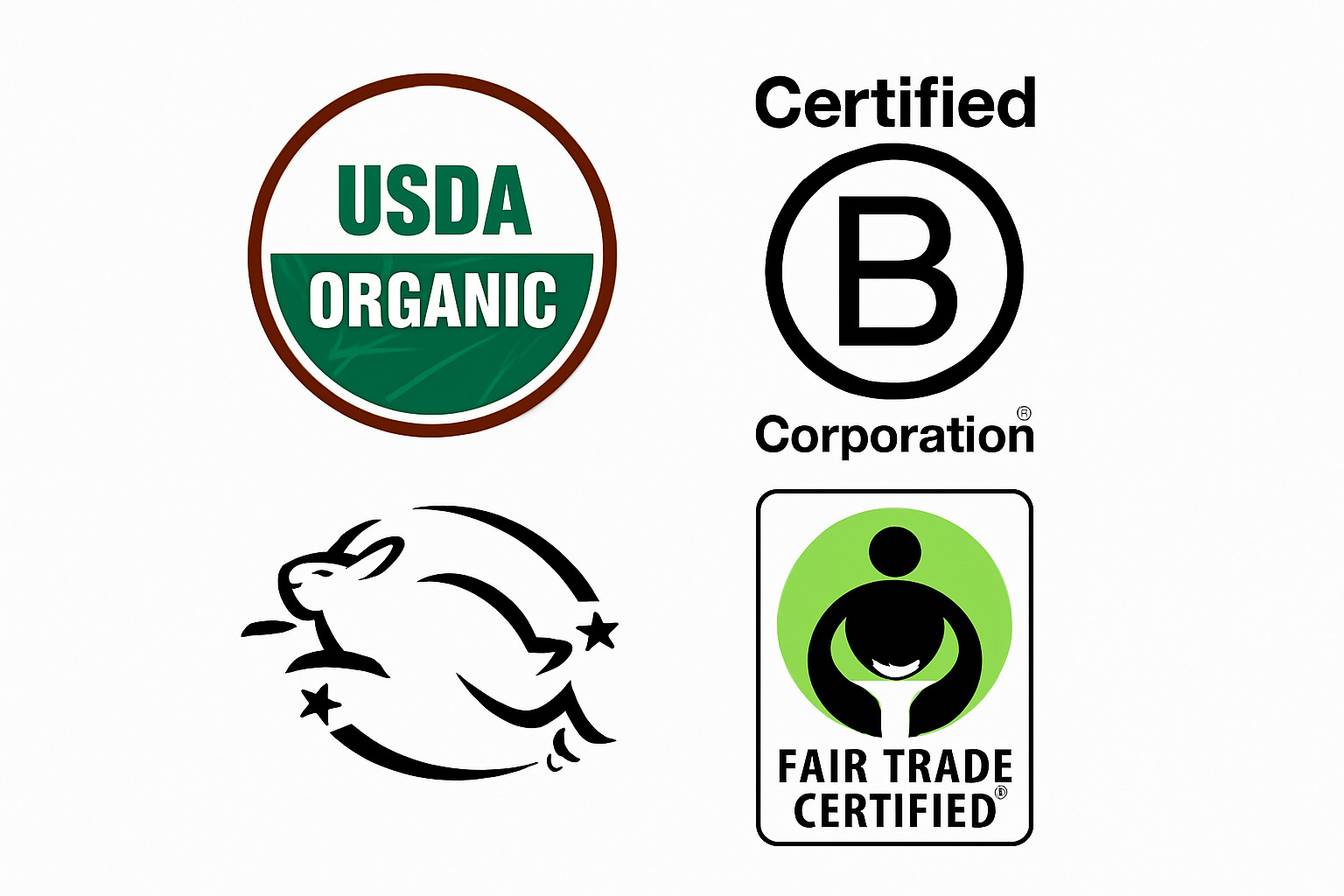
When I’m evaluating whether a brand is truly committed to sustainability, I always consider four key factors: Do they openly share their ingredient list? How ethically do they source materials and treat workers? Is their packaging minimal, recyclable, or (even better) refillable? And have they taken steps to reduce their carbon footprint through renewable energy or offset programs?
For creating a healthier home environment, consider switching to low-VOC paints, which release fewer harmful chemicals into your air. Take inspiration from the Portola Hotel & Spa, which earned LEED Silver certification by incorporating LED lighting, water-saving fixtures, organic mattresses, and those same low-VOC paints – all practices you can adapt to your own living space.
Harvard Health’s research reminds us that what we put on our skin matters deeply. Their studies show that ingredients in moisturizers and other topical products don’t just sit on the surface – they can be absorbed into our bodies, making the case for clean, natural ingredients even stronger. As we like to say at Beyond Beauty Lab, “Your skin drinks what you feed it.”
Beauty & Personal-Care Heroes
Ready to make some impactful swaps in your beauty routine? These sustainable alternatives can dramatically reduce your environmental footprint while still delivering excellent results.
Shampoo and conditioner bars have become my personal favorites. These solid alternatives completely eliminate plastic bottles and typically last much longer than liquid formulas – one bar can replace up to three plastic bottles! The initial adjustment period is worth it for both your hair and the planet.
Bamboo razors with replaceable metal blades provide a wonderfully close shave without contributing to the billions of plastic razors filling landfills each year. They’re beautiful objects too – something you’ll want to display rather than hide.
Mineral sunscreens offer effective protection while being gentler on coral reefs. Look for options in paperboard tubes or metal tins to completely avoid plastic packaging. Your skin and the ocean will thank you!
Creating your own DIY scrubs and masks can be surprisingly effective and fun. Coffee grounds make an excellent exfoliant (and give used grounds a second life), honey provides antibacterial and moisturizing properties, and oatmeal soothes even the most sensitive skin.
I’ve fallen in love with reusable makeup remover pads made from organic cotton or bamboo. Though they require a small investment upfront, a set of 12 can eliminate thousands of disposable cotton pads over their lifetime – a perfect example of how sustainable choices often save money in the long run.
Many innovative brands now offer refillable makeup systems where you keep the compact, lipstick case, or mascara wand and replace only the product inside. This approach maintains the luxury experience while dramatically reducing packaging waste.
Fitness & Wellness Must-Haves
Your workout routine offers countless opportunities for eco-friendly wellness choices that perform beautifully while treading lightly on the earth.
Cork yoga blocks provide excellent support during practice while being renewable, biodegradable, and naturally antimicrobial. The tactile feel of cork also adds a pleasing sensory element to your yoga sessions.
Organic cotton mats and props free from synthetic materials and harmful dyes create a non-toxic foundation for your fitness routine. Since you’re often in close contact with these items (sometimes pressing your face against them), choosing natural materials makes perfect sense.
Technology is evolving too, with solar-powered wearables entering the market. Some fitness trackers and watches now incorporate solar charging to extend battery life and reduce energy consumption, merging sustainability with smart functionality.
Hydration is essential during workouts, but plastic bottles aren’t. Stainless steel or glass water bottles offer durability and purity without leaching chemicals into your water or contributing to plastic pollution.
For strength training, consider biodegradable resistance bands made from natural latex rather than synthetic materials. They provide effective resistance while having a much gentler environmental impact when they eventually wear out.
For more recommendations on sustainable wellness tools that we’ve personally tested and love at Beyond Beauty Lab, visit our Wellness Tools We Swear By: A Curated List for Everyday Use.
Travel & Retreat Trends
The wellness tourism industry is embracing sustainability in exciting ways, allowing you to nurture yourself while honoring the planet.
LEED-certified hotels like The Nature Inn at Bald Eagle State Park showcase what’s possible in sustainable hospitality. Their LEED Gold certification recognizes features like geothermal heating and cooling, rainwater harvesting systems, and thoughtful use of Forest Stewardship Council-certified wood throughout the property.
Moving beyond simply reducing harm, regenerative resorts actively improve their surroundings. Many operate their own organic farms, restore native habitats, or run conservation programs that leave the location better than they found it – a powerful evolution in travel ethics.
Leading wellness facilities are becoming zero-single-use spas, eliminating disposable items like plastic water bottles, individually wrapped amenities, and single-use slippers. These changes preserve the luxury experience while dramatically reducing waste.
For the climate-conscious traveler, carbon-offset packages are increasingly available. These thoughtful options include investments in renewable energy or reforestation projects to compensate for the emissions generated by your journey.
The best eco-friendly wellness retreats weave sustainability throughout the guest experience – serving plant-based, locally-sourced meals; using organic, locally-made spa products; offering educational programs about local ecosystems; employing water conservation technologies; and supporting community conservation efforts.
These meaningful trends reflect a growing understanding that true wellness extends beyond personal health to include the wellbeing of our shared environment. After all, how can we truly be well if the world around us is suffering?
How to Identify Greenwashing & Overcome Adoption Challenges
Let’s face it—as eco-friendly wellness becomes more popular, many companies are jumping on the bandwagon without actually doing the work. This practice, known as “greenwashing,” can make it tough to figure out which products truly align with your sustainable values.

I’ve been there too—standing in the store aisle, staring at a product with leaves all over the packaging that claims to be “all-natural,” wondering if it’s the real deal or just clever marketing.
Watch out for these common greenwashing red flags:
Vague buzzwords like “natural,” “green,” or “eco-friendly” without any specifics to back them up. These terms aren’t regulated, so companies can use them pretty freely.
Nature-inspired packaging with earthy colors and plant imagery often creates an impression of sustainability that the actual product doesn’t deliver.
The spotlight technique where a brand highlights one tiny green aspect while ignoring their larger environmental impacts. Like a product boasting about recyclable caps while the bottle itself is made from non-recyclable plastic.
Irrelevant claims that sound impressive but don’t actually mean much. “CFC-free” might sound good, but CFCs have been banned for decades!
Missing evidence when a company makes big environmental claims without offering any proof or transparency about their practices.
Genuine sustainable brands typically have nothing to hide—they’re usually eager to share details about their ingredients, sourcing methods, and manufacturing processes. Look for specific third-party certifications rather than taking a company’s word at face value.
I know from personal experience that shifting to eco-friendly wellness isn’t always easy. You might face challenges like:
Higher price tags on sustainable products can be off-putting at first. Remember though, many eco-friendly items last much longer than conventional alternatives, making them more economical over time. That $25 shampoo bar that replaces three bottles of liquid shampoo? Suddenly it’s not looking so expensive.
Limited availability depending on where you live. Small towns and rural areas often have fewer options for sustainable products in physical stores.
The comfort of old habits can be hard to break. We get used to our routines and products, even when we know they’re not the best choices.
Information overload with so many conflicting claims and advice can leave you feeling paralyzed with indecision.
The key is to start small, focus on changes that feel manageable, and connect with like-minded people who can share their experiences and recommendations. This is a journey—not an overnight change.
Reading Labels Like a Pro
Decoding product labels is a skill that gets easier with practice. Here’s how to become a more savvy label reader:
Get familiar with INCI listings (International Nomenclature of Cosmetic Ingredients)—this standardized system lists ingredients in order of concentration, from highest to lowest. The first five ingredients typically make up the bulk of the product.
Be aware that the term “natural” has no regulated definition in the beauty industry. Instead, look for specific certifications like COSMOS, NATRUE, or USDA Organic that have clear, enforced standards.
Watch out for the fragrance loophole—companies aren’t required to disclose specific fragrance ingredients, which means “fragrance” or “parfum” on a label can hide dozens of synthetic chemicals. Products labeled “fragrance-free” or those that specify “scented with essential oils” are usually more transparent.
Consider the water content in products. When water (aqua) is the first ingredient, you’re paying primarily for water rather than active ingredients. Solid products like shampoo bars and balms typically contain less water and more concentrated ingredients.
When I’m unsure about an ingredient, I often check the Environmental Working Group’s Skin Deep database, which rates ingredients based on scientific research about their potential health impacts.
Budget-Friendly Eco-Friendly Wellness Hacks
Living sustainably doesn’t have to empty your wallet. I’ve found these approaches help me maintain eco-friendly wellness practices without breaking the bank:
Create a container collection. I save and clean empty jars and bottles to reuse for bulk purchases and homemade products. That fancy olive oil bottle? It’s now a beautiful dispenser for my DIY facial oil.
Accept bulk buying. Many health food stores and co-ops offer bulk options for personal care ingredients like carrier oils, shea butter, and essential oils. Bringing your own containers eliminates packaging waste and typically costs less per ounce than pre-packaged alternatives.
Join or organize community swaps. I’ve found some of my favorite wellness items through exchanges with friends and neighbors. One person’s unused yoga block becomes another’s treasure!
Get creative with upcycling. Before recycling or discarding items, consider how they might be repurposed. Glass jars make perfect containers for homemade scrubs, old t-shirts become cleaning rags, and cardboard boxes can be transformed into drawer organizers.
DIY the simple stuff. Making your own body scrubs, face masks, or cleaning products is surprisingly easy and affordable. My go-to body scrub is simply coffee grounds mixed with a bit of coconut oil—it costs pennies and works better than expensive store-bought versions.
Invest strategically in durable, high-quality items you use daily (like a water bottle or yoga mat) and save on items you use less frequently. Quality pieces often last years longer than cheap alternatives.
As we like to remind our community at Beyond Beauty Lab, “Sustainability isn’t about buying new ‘green’ products—it’s often about using what you have more mindfully and making thoughtful choices when replacement is necessary.”
The most sustainable product is usually the one you already own. By extending the life of your existing items through proper care and repair, you’re practicing eco-friendly wellness in one of the most impactful ways possible.
Community Engagement & Advocacy for Widespread Eco-Friendly Wellness
While your personal journey toward eco-friendly wellness matters tremendously, the magic really happens when we join forces. Individual choices create ripples, but community action creates waves of positive change that can transform entire systems.
Getting involved doesn’t have to be complicated. Start by volunteering with local environmental organizations where you can participate in beach cleanups, tree planting initiatives, or habitat restoration projects. These hands-on activities not only help the planet but connect you with like-minded individuals who share your values.
Your voice matters too! Support policy initiatives that limit harmful ingredients in personal care products, reduce single-use plastics, or promote sustainable practices throughout the beauty and wellness industries. When consumers speak up collectively, companies and legislators listen.
Did you know the beauty industry sends a staggering 877 pounds of waste to landfills every minute? This sobering statistic highlights why specialized recycling programs like Pact Collective are so valuable—they accept beauty packaging that might be rejected by municipal recycling systems.
“When we come together around sustainable wellness, we create momentum that individual action alone simply can’t achieve,” says one Green Beauty Community organizer. This nonprofit organization provides education and resources to help make sustainable beauty practices the new standard rather than the exception.
Sharing knowledge is perhaps one of the most powerful forms of advocacy. Whether you host a workshop on making natural skincare products, start a blog about your sustainable wellness journey, or simply have conversations with friends about your favorite eco-friendly products, you’re planting seeds of change that can grow in unexpected ways.
For inspiration on eco-friendly spa experiences that you can advocate for in your community, visit our guide to Eco-Friendly Spa Treatments.
Workplace & Business Implementation
If you work in or own a wellness business, you’re uniquely positioned to create significant environmental impact through your professional practices.
Spas and salons use extraordinary amounts of water and energy—a typical salon chair consumes about 270 gallons of water daily! Simple changes like installing low-flow showerheads, faucets, and toilets can dramatically reduce this footprint. Energy audits can reveal additional opportunities for efficiency improvements, from switching to LED lighting to upgrading to energy-efficient appliances.
Product choices matter enormously in wellness businesses. Sourcing organic, locally-made treatment products not only reduces transportation emissions but often provides superior results for clients. Implementing comprehensive recycling and composting systems captures valuable resources that would otherwise end up in landfills.
Staff education is the secret ingredient that makes these changes stick. When team members understand both the “how” and the “why” behind sustainable practices, they become powerful advocates who can educate clients about the benefits of eco-friendly wellness choices.
For wellness retreats and hotels, the opportunities extend even further. Pursuing green certifications like LEED or Green Key provides a roadmap for comprehensive sustainability improvements. Eliminating single-use plastics, installing renewable energy systems, using organic linens, and offering plant-based menu options all contribute to a truly holistic wellness experience.
The business benefits are compelling: reduced operational costs through lower energy and water use, increased customer loyalty (particularly among environmentally conscious clients), and positive brand differentiation in a competitive marketplace. As one spa owner shared, “Our sustainability practices have become our strongest marketing tool—clients choose us specifically because our values align with theirs.”
Eco-Friendly Wellness in Schools & Neighborhoods
Bringing eco-friendly wellness into educational settings and local communities creates lasting change that spans generations.
Well-being literacy programs in schools help young people understand the profound connection between personal health and environmental health. When children learn these principles early, sustainable choices become second nature rather than an afterthought.
Community gardens serve multiple purposes—providing fresh produce, creating community connections, and serving as living classrooms for sustainable practices. The simple act of growing food together builds relationships while deepening our connection to the earth.
“When we started our neighborhood garden, we expected to grow vegetables,” explains one community organizer. “What surprised us was how we also grew friendships, resilience, and a shared commitment to caring for our little piece of the planet.”
Local workshops on natural skincare, sustainable nutrition, or eco-friendly home care spread practical knowledge while building community. Neighborhood challenges can make sustainability fun—friendly competitions to reduce waste, conserve water, or increase plant-based meals create momentum and accountability.
Resource sharing is another powerful community practice. Tool libraries allow people to borrow infrequently used wellness equipment like juicers, massage tools, or exercise gear, reducing unnecessary consumption while increasing access to wellness resources.
These community initiatives don’t just spread sustainable practices—they build stronger, more connected neighborhoods where wellness becomes a shared value rather than a solitary pursuit. In today’s increasingly isolated world, the social connections formed through eco-friendly wellness activities might be their most valuable benefit of all.
Frequently Asked Questions about Eco-Friendly Wellness
Does eco-friendly wellness cost more long-term?
I hear this question all the time, and I completely understand the concern. While that initial price tag on sustainable products might make you wince, the long-term math actually works in your favor.
Think about it this way: that stainless steel water bottle might cost $25 upfront, but it replaces hundreds of plastic bottles over its lifetime. The same goes for those gorgeous bamboo utensils or that high-quality yoga mat made from natural rubber – they’re built to last for years, not months.
Many of my readers have shared how surprised they were to find that eco-friendly wellness practices actually trimmed their monthly expenses. Water-saving fixtures reduce utility bills, while DIY solutions slash product costs dramatically. One of my favorite money-saving swaps is making body scrub from coffee grounds, coconut oil, and sugar – it costs pennies compared to fancy store-bought exfoliators and works just as well (if not better!).
There’s also the hidden cost of conventional products that never shows up on your receipt. The environmental cleanup, healthcare costs from pollution, and resource depletion all represent real expenses that we pay for collectively, even if they’re not reflected in the immediate price tag.
How do I start an eco-friendly beauty routine?
Starting your eco-friendly wellness journey doesn’t have to mean a dramatic overhaul of your bathroom cabinet overnight. In fact, throwing away perfectly good products would create unnecessary waste – exactly what we’re trying to avoid!
Begin by using up what you already have while researching sustainable replacements. Pay attention to the products you use every single day – these should be your priority swaps since they’ll have the biggest impact. For most of us, that means focusing first on items like shampoo, body wash, and deodorant.
You might be surprised to find how many products you can actually eliminate. Most dermatologists agree that healthy skin needs far fewer products than beauty marketing would have us believe. A simple routine with a gentle cleanser, effective moisturizer, and mineral sunscreen can work wonders.
When researching brands, look beyond the pretty packaging with leaves and earth tones. Dig into their ingredient transparency, manufacturing processes, and packaging choices. Companies truly committed to sustainability are usually eager to share these details.
Consider format changes too – shampoo bars can replace plastic bottles, and concentrated formulas mean less packaging and lower shipping emissions. And don’t overlook the DIY option! Simple items like scrubs, masks, and hair treatments can be made at home with ingredients you probably already have in your kitchen.
Remember to properly recycle your empties – or better yet, look for brands with take-back programs for their packaging. Every sustainable choice makes a difference, and your routine will naturally evolve as you learn more and find new options that work for you.
Which certifications can I actually trust?
The sea of logos, seals, and claims on packaging can be absolutely overwhelming. After years in this industry, I’ve learned which certifications actually have teeth behind them:
USDA Organic certification means ingredients were grown without synthetic fertilizers, pesticides, or GMOs. This is regulated by the government and has strict standards.
COSMOS or NATRUE certifications are the gold standards for natural and organic cosmetics internationally. They evaluate everything from ingredients to manufacturing processes and packaging.
The B Corporation certification looks beyond just ingredients – it evaluates a company’s entire social and environmental performance. These companies commit to transparency and accountability across their operations.
If animal welfare is important to you (as it is to me!), Leaping Bunny certification ensures no animal testing at any stage of product development. Unlike vague “cruelty-free” claims, this certification involves regular audits and has strict standards.
Fair Trade Certified products ensure farmers and workers receive fair compensation and work in safe conditions – an important ethical consideration in your eco-friendly wellness journey.
For those concerned about ingredient safety, EWG Verified products meet the Environmental Working Group’s strict criteria for transparency and health.
The Rainforest Alliance certification focuses specifically on biodiversity conservation and sustainable livelihoods for farm and forest communities.
I recommend identifying which issues matter most to you – whether that’s animal welfare, worker rights, or environmental impact – and looking for certifications that address those specific concerns. Be especially wary of impressive-looking logos created by the brands themselves without any third-party verification.
No product is perfect, but these certifications can help you make more informed choices as you build your sustainable wellness routine.
Conclusion
Journeying through eco-friendly wellness is like tending a garden—it nurtures both your personal health and our shared planet. As we’ve explored together, sustainable self-care isn’t just about the products we choose (though those biodegradable ingredients and plastic-free packages certainly matter!). It’s about creating a holistic approach that recognizes how deeply connected we are to the natural world around us.
The numbers tell a sobering story—120 billion beauty packages produced yearly, with 8 million tons of plastic swimming into our oceans. But here’s the beautiful truth: your choices matter. Each time you opt for a shampoo bar instead of a plastic bottle or spend a mindful moment in nature instead of scrolling through your phone, you’re casting a vote for the world you want to live in.
Perfect sustainability doesn’t exist—and that’s completely okay. What matters is making thoughtful choices where you can and growing your practices over time. Maybe you start with switching to a bamboo toothbrush this month, then explore zero-waste makeup options next season. Each step forward counts, no matter how small it might seem.
At Beyond Beauty Lab, we believe that true beauty flows naturally from living in harmony with our environment, not by depleting it. When you honor the earth in your wellness routine, you’re not sacrificing effectiveness or joy—you’re actually enhancing your experience by adding purpose and connection to your self-care.
We warmly invite you to take just one action today. It could be as simple as swapping out a single plastic product in your bathroom, beginning a two-minute daily meditation outdoors, or sharing what you’ve learned about eco-friendly wellness with someone you care about. These small ripples create powerful waves of change that extend far beyond your immediate circle.
For deeper exploration into clean beauty and holistic approaches to wellness that honor both body and planet, visit our comprehensive resource at More info about clean beauty & holistic wellness.
The path to sustainable wellness isn’t paved with perfection—it’s built on progress, intention, and the growing understanding that our personal health is beautifully intertwined with the health of our planet. Together, we’re creating a future where our wellness practices nourish not just ourselves, but the earth we all call home.
When you make that next eco-friendly choice, remember you’re never walking alone. There’s a growing community of us—learning, trying, sometimes stumbling, but always moving forward toward a healthier relationship with ourselves and our planet. And that, dear friend, is true beauty in action.

